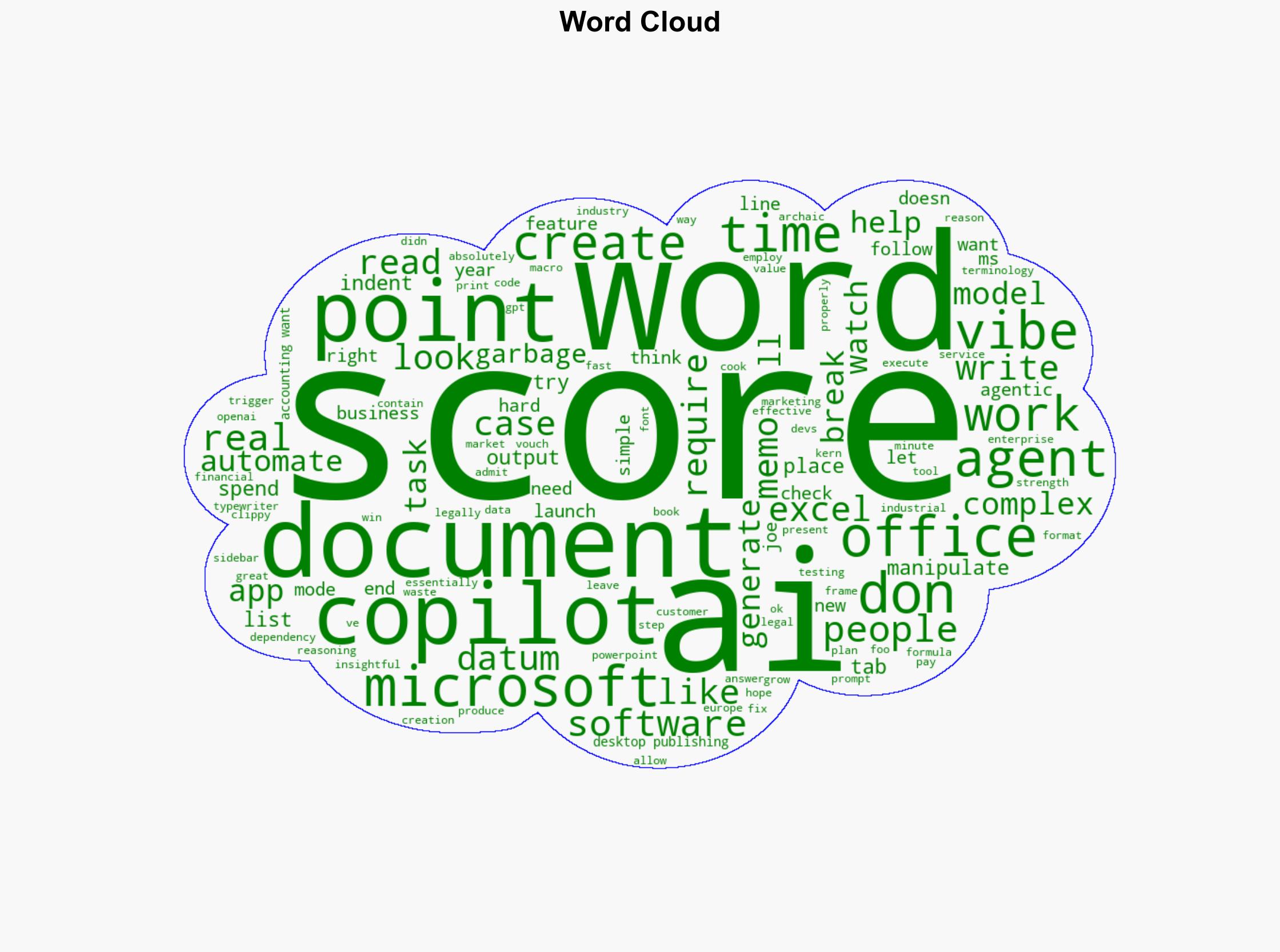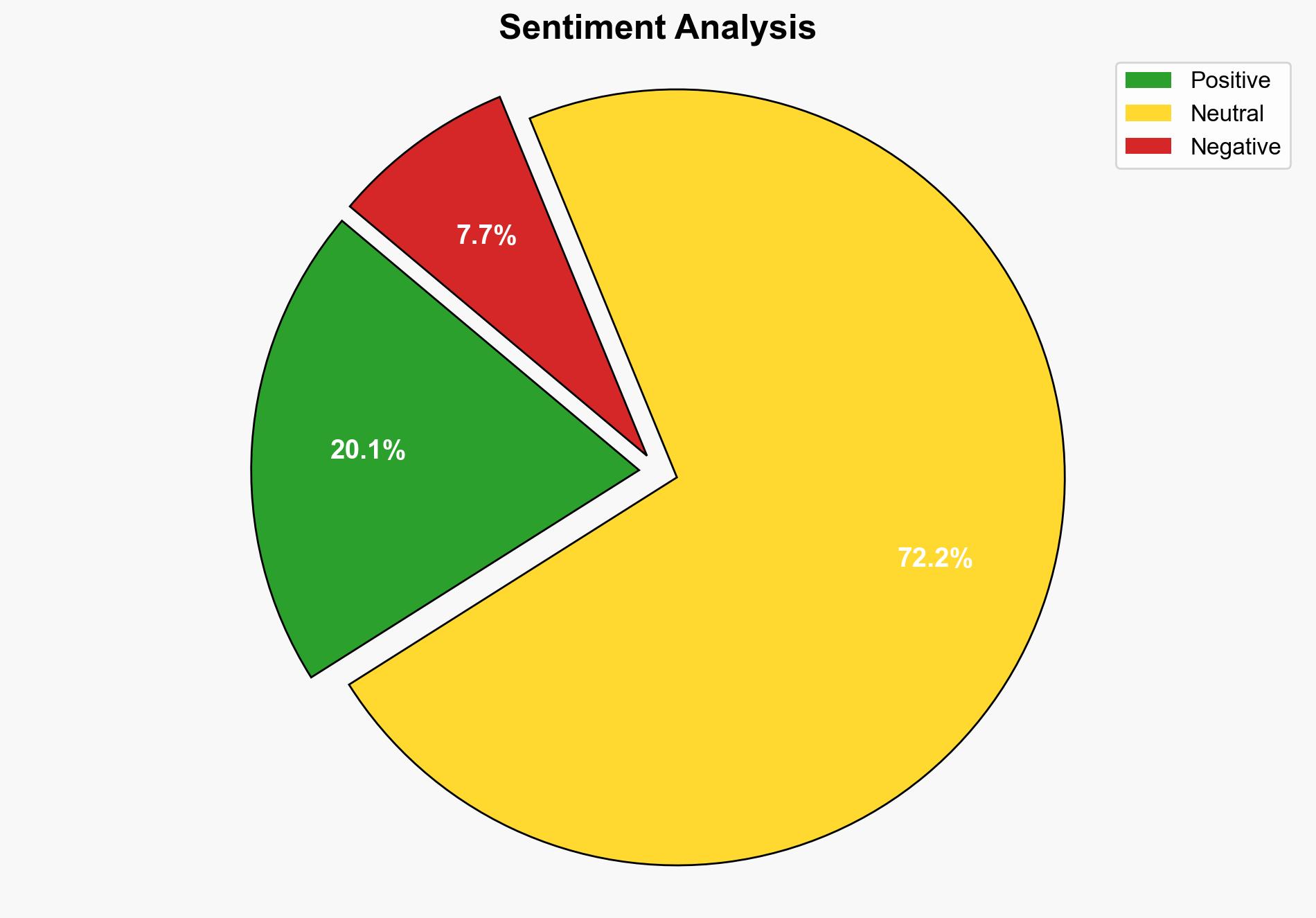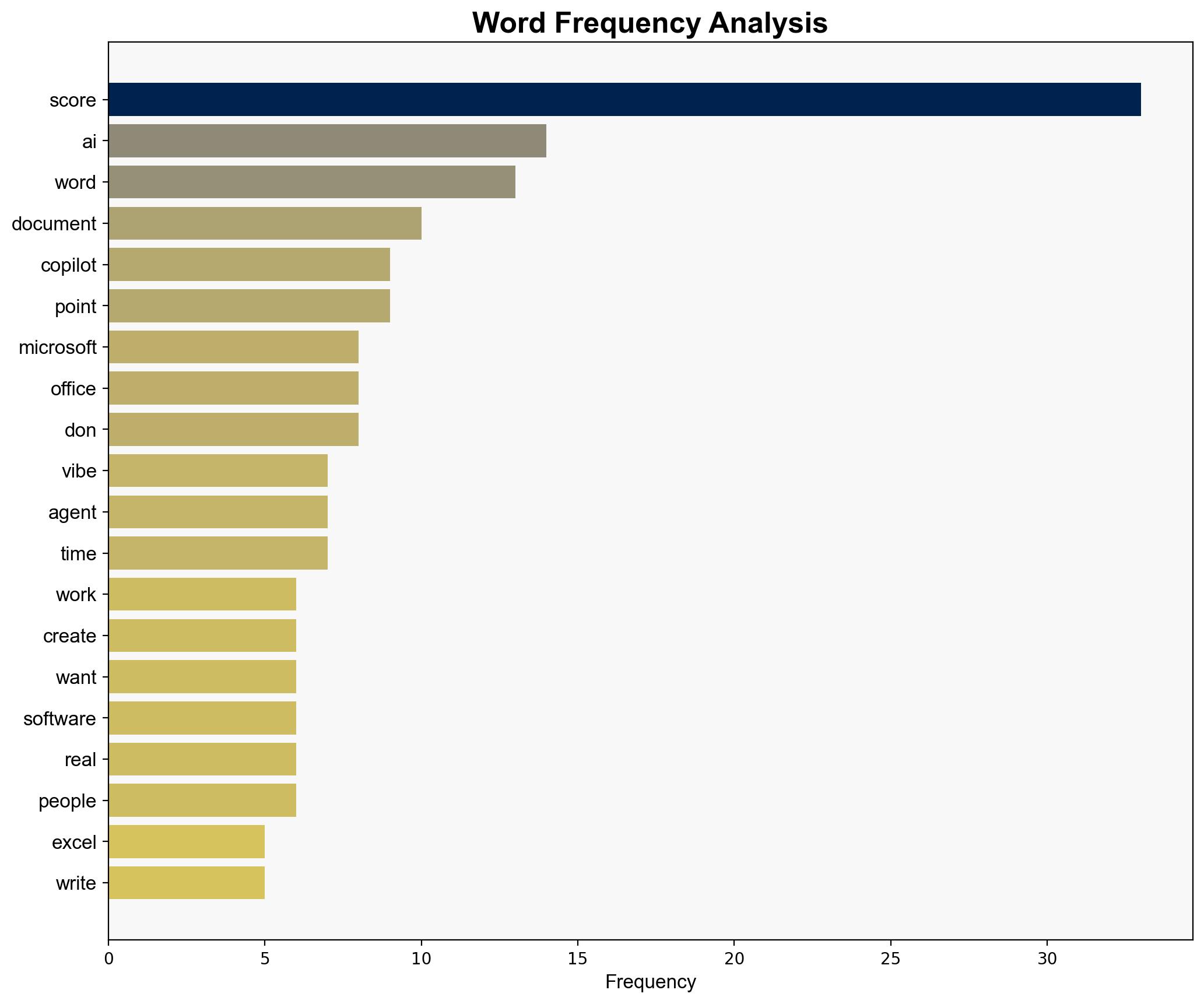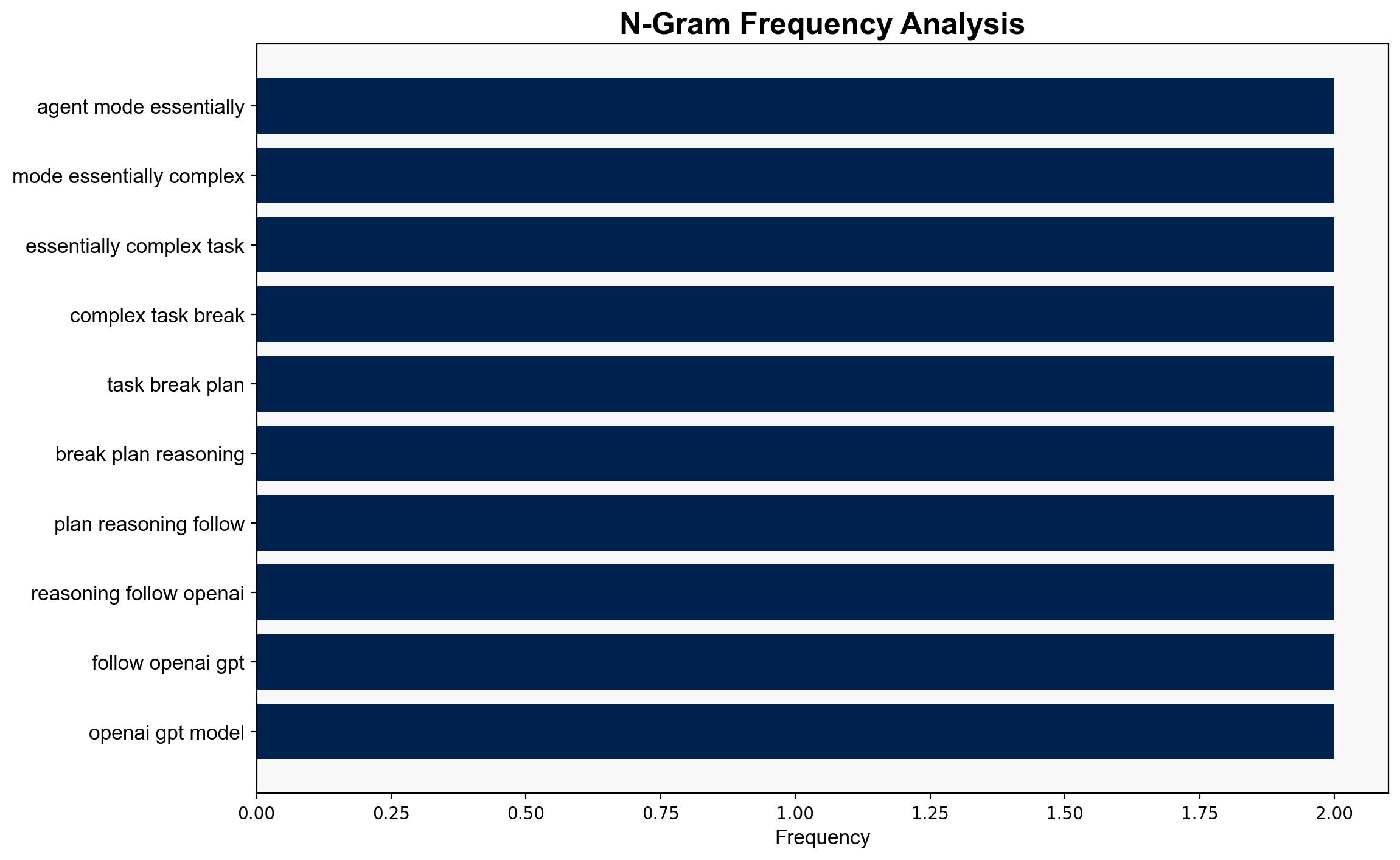Microsoft Launches ‘Vibe Working’ in Excel and Word – Slashdot.org
Published on: 2025-09-29
Intelligence Report: Microsoft Launches ‘Vibe Working’ in Excel and Word – Slashdot.org
1. BLUF (Bottom Line Up Front)
Microsoft’s introduction of ‘Vibe Working’ in Excel and Word represents a strategic move to integrate AI-driven productivity tools into its Office suite. The most supported hypothesis suggests that this initiative aims to enhance user efficiency and maintain Microsoft’s competitive edge in the productivity software market. Confidence level: Moderate. Recommended action: Monitor adoption rates and user feedback to assess the tool’s effectiveness and potential market impact.
2. Competing Hypotheses
1. **Hypothesis A**: Microsoft aims to enhance productivity and maintain its market leadership by integrating AI-driven features into its Office suite. This hypothesis is supported by the strategic alignment with current trends in AI and productivity tools.
2. **Hypothesis B**: The launch of ‘Vibe Working’ is primarily a marketing strategy to create buzz and distract from potential shortcomings or stagnation in other areas of Microsoft’s business. This hypothesis considers the possibility of over-promising AI capabilities to boost short-term interest.
Using the Analysis of Competing Hypotheses (ACH) 2.0, Hypothesis A is better supported due to Microsoft’s historical focus on innovation and the integration of AI across its product lines.
3. Key Assumptions and Red Flags
– **Assumptions**: It is assumed that AI integration will lead to significant productivity gains and that users will adopt these features without major resistance.
– **Red Flags**: Potential over-reliance on AI capabilities that may not meet user expectations. The snippet suggests skepticism about AI’s ability to handle complex tasks without errors, indicating a possible gap between marketing and actual performance.
– **Blind Spots**: The potential for AI-driven tools to introduce new security vulnerabilities or data privacy concerns is not addressed in the source.
4. Implications and Strategic Risks
– **Economic**: Successful integration could strengthen Microsoft’s market position, but failure could lead to reputational damage and loss of market share.
– **Cybersecurity**: Increased reliance on AI tools may expose users to new types of cyber threats, particularly if AI models are not adequately secured.
– **Geopolitical**: As AI becomes more integrated into business processes, regulatory scrutiny may increase, particularly in regions with strict data protection laws.
– **Psychological**: User trust in AI tools could be undermined if the tools fail to deliver expected results, impacting overall adoption rates.
5. Recommendations and Outlook
- Conduct thorough user testing and gather feedback to refine AI features and address potential shortcomings.
- Implement robust cybersecurity measures to protect AI models and user data.
- Engage with regulators to ensure compliance with data protection laws, particularly in regions with stringent requirements.
- Scenario Projections:
- Best Case: High adoption rates and positive user feedback lead to increased market share and enhanced brand reputation.
- Worst Case: AI tools fail to meet expectations, resulting in user dissatisfaction and potential loss of market share.
- Most Likely: Gradual adoption with mixed feedback, requiring iterative improvements to achieve desired outcomes.
6. Key Individuals and Entities
– Microsoft Corporation
– OpenAI (as a technology partner)
– Anthropic (mentioned in relation to AI model integration)
7. Thematic Tags
technology innovation, AI integration, productivity tools, cybersecurity risks, market strategy




